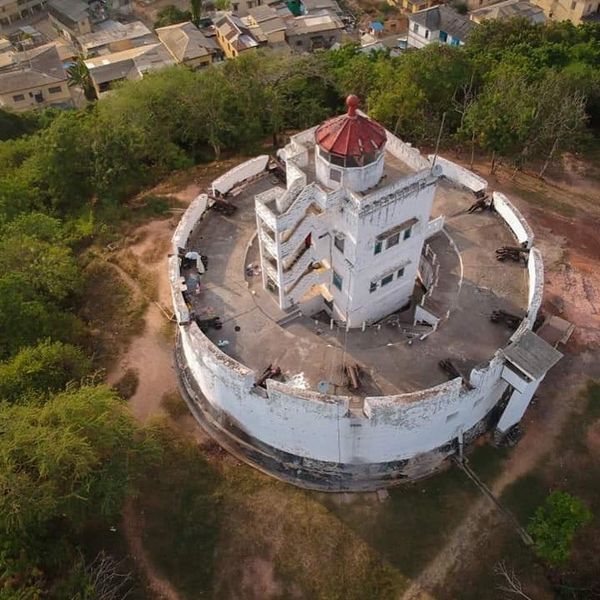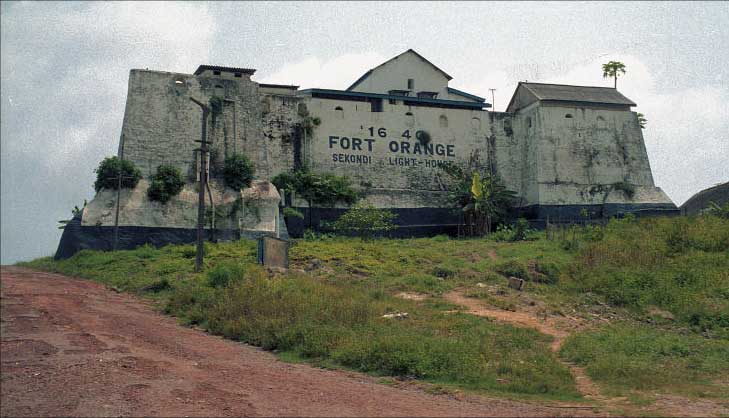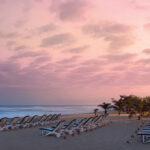The castles and forts of Ghana can be referred to as treasures to the legacy of the historic past of the gold coast, now modern-day Ghana and the entire of Africa and the world at large. There are a lot and forts and castles in Ghana that a lot of people do not know about that is why this piece is targeted at educating you on some prominent forts and Castles in Ghana you shouldknow.
Most of these Forts and Castles came from Europe – Portuguese, Dutch, French, Britons, Brandenburg-Prussians, Danes and Swedes with the sole purpose of cross Atlantic trade of species, gold and other rare valuables to the slave trade. For several centuries, European masters and native African servants lived and worked in these buildings. These castles were used as warehouses teamed with gold and ivory export products as well as African slaves destined for auction in the New World. The survivors of this slavery era later become ancestors to future generations of black populations in European Countries.
Through the struggle to win back the African soul and way of life, these historic buildings were no respecters of persons and extraordinary history was made. The Elmina held the Asante King as a prisoner in all his splendour during the first stage of his forced exile from the Ashanti kingdom. Hence, Ghana and other countries of the Western hemisphere and elsewhere constitute stakeholders with an interest in ensuring the preservation of these historic castles and forts and the history it holds. Recognizing their unique place in world history, the World Heritage Convention of UNESCO has designated Ghana’s castles and forts as World Heritage Monuments.
Here is a list of some Castles and Forts in Ghana
- Elmina Castle
Situated along the Coastal belt of Cape coast is the esteemed Elmina Castle. Elmina Castle or Saint George’s Castle is the oldest Castle in Ghana and the entire continent of Africa. The Castle was constructed in 1482 by the Portuguese. The Elmina was driven from the portages word “A mina” meaning a gold mine, due to the accent of the gold coast people, they pronounced it’s as Elmina. the castle is the first of all the forts/castles and the only oldest European building in the area and west Africa. Elmina Castle also played a big role in gold trading but later became a hub for the slave trade in West Africa. It was captured from the Portuguese in 1637 by the Dutch. They also constructed Fort Coenraadsburg on top of the hill just 500 meters away as extra protection and barracks for the soldiers.
Elmina Castle was established before Cape Coast Castle around a fishing village port. The village, before the slave trade thrived, was a hub of commercial and social activity centring around a fort that had been built by the Portuguese. As the need for slaves was becoming more apparent, the castle was built in anticipation of the pending mass trafficking of the Black cargo. Even though the Portuguese may have been the ones who entered the slave enterprise on a mass scale, the British took over the castle from the Dutch and in addition built the Cape Coast Castle. In the middle courtyard, there is a church that is rare and cannot be found in any of the other slave forts in Ghana. The Church place is now being used as a Mausoleum to house the history and some artefacts like hand shackles. The dungeons could hold about 1500 slaves. The dungeons/rooms are small and it’s difficult and dehumanizing to imagine how 1500 people/slaves would be kept there.
2. Christianborg Castle
A Portuguese fortified house in 1500. The fort was taken by Swedes in 1652 and later taken by Danes in 1657. The Danes enlarged the fort into a castle and named it Christianborg after King Christian V of Denmark, in 1659. The castle was temporarily captured by the Dutch in 1660. Then Temporarily in Portuguese hands and called S. Francis Xavier, in 1679-83 and was reoccupied by Danes, in 1683. In 1693 the Akwamus retook the castle from Danes. The Castle was then enlarged within 1730 and 1780 and was Bought by Britain in 1850. The castle later fell victim to Damages by an earthquake in 1862 after which it was used as a lunatic asylum. The castle was renovated and used as the residence of the British Governor of Gold Coast, in 1877-1957. Residence of Prime Minister of Ghana and renamed Government House, Osu, in 1957. The Castle became the official residence of Dr. Kwame Nkrumah, First President of Ghana in 1960 and has since remained the Seat of Government.
Ussher Fort (Fort C)
Ussher for is located along the coastal line of the present-day James town British-Accra, the fort was built by the Dutch in 1649 as Fort Crèvecœur and was a day’s march from Elmina and to the east of Accra on a rocky point between two lagoons. It was one of three forts that Europeans built in the region during the middle of the 17th century. Fort Crèvecœur was part of the Dutch Gold Coast. The Anglo-Dutch Gold Coast Treaty (1867), which defined areas of influence on the Gold Coast and was later transferred to the British in 1868.


01ANMF1C Usser Fort – Accra, Ghana
Fort James
Located along the coastal shore of James town British-Accra, Ghana. The fort was built by the Royal African Company of England as a trading post for both gold and slaves in 1673, where it joined the Dutch Fort Crêvecœur in 1649 and the Danish Fort Christiansborg in 1652. Fort James was likely named after James, Duke of York, who was Governor of the RAC at the time it was built and after whom the adjacent town of Jamestown in Accra is also named. The fort stands next to Jamestown Lighthouse and from colonial times up to 2008, the fort served as a prison.
Fort Amsterdam
Located at KORMANTSE in the Central region. It was built by the English between 1638 and 1645 as Fort Cormantin or Fort Courmantyne and was captured by admiral Michiel de Ruyter of the Dutch West India Company in 1665, in retaliation for the capture of several Dutch forts by the English Admiral Holmes in 1664. It was subsequently made part of the Dutch Gold Coast stronghold and remained part of it until the fort was traded with the British in 1868.
Fort William
Lactated at ANOMABU, this fort was built by the Dutch in 1640 and later Captured by the Swedes in the early 1950s. Captured by the Danes under Sir Henry Carlof, in 1657. Recaptured by the Dutch in 1660. Capitulated to the Dutch under De Ruyter in 1665. Rebuilt by the English as Fort Charles in 1679. Occupied by the Anomabus, in 1701. Abandoned by the English in 1730. The present fort (now wrongly called Fort William) was built by the British, in 1753-56. It was Bombarded by the French in 1794 and attacked by the Anomabus in 1801. On 15th June 1806, it was attacked by Ashantis. Then later Purchased by the English in 1872. In 1954, Fort William was Restored.
CAPE COAST – Cape Coast Castle
The strategic location of Cape Coast has a sheltered beach in proximity to Elmina Castle made it a great attraction to the European nations. Hence, for nearly a century, there was a ding-dong competition among the Portuguese, Dutch, Danes, Swedes and English to gain control of Cape Coast. The Portuguese built the first trade lodge in 1555 and called the local settlement “Cabo Corso”, meaning short cape, later corrupted to Cape Coast. The Swedes, led by Krusenstjerna, built a permanent fort in 1653 and called it Carolus burg after King Charles X of Sweden. During the next 11 years, the Danes, the local Fetu chief and the Dutch each, in turn, captured and held Carolusburg for a time. Finally, the English fleet led by Captain Holmes took Carolusburg. The fort remained in English hands till the late 19th century serving as the West African headquarters seat of the president of the Committee of Merchants and later as the seat of the British governor.
Fort Orange
Fort Orange was built as a trading post on the Dutch Gold Coast in 1642, near Sekondi in the Western Region of Ghana. It functioned as a lodge for a while during the 1670s and that was the original purpose for the fort before it was used as a trading post. The trading post was enlarged into a fort in 1690. It was joined by an English Fort Sekondi in 1682. It was sold with the rest of the Dutch Gold Coast to the United Kingdom in 1872 and now serves as a lighthouse.
All together these castles and forts have played key roles in Ghana’s History and still hold for generations to come, therefore do well to visit these National Monuments and enrich yourself in Ghanaian history.
Kindly stay tuned to Xperience Ghana to be updated on tour packages to visit these places.






















